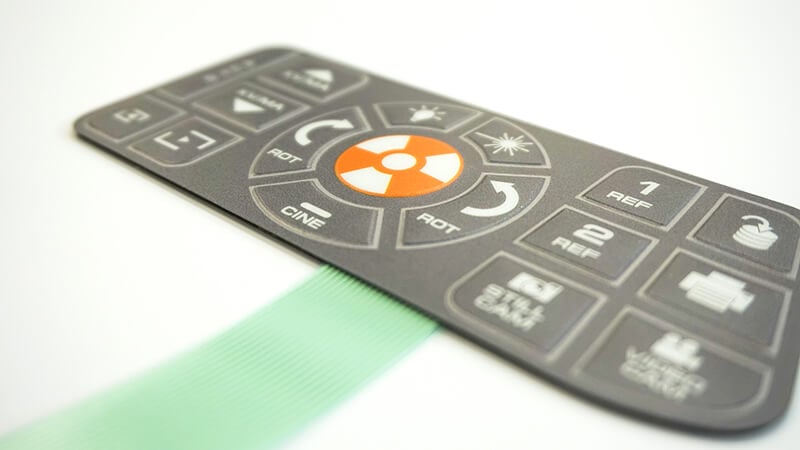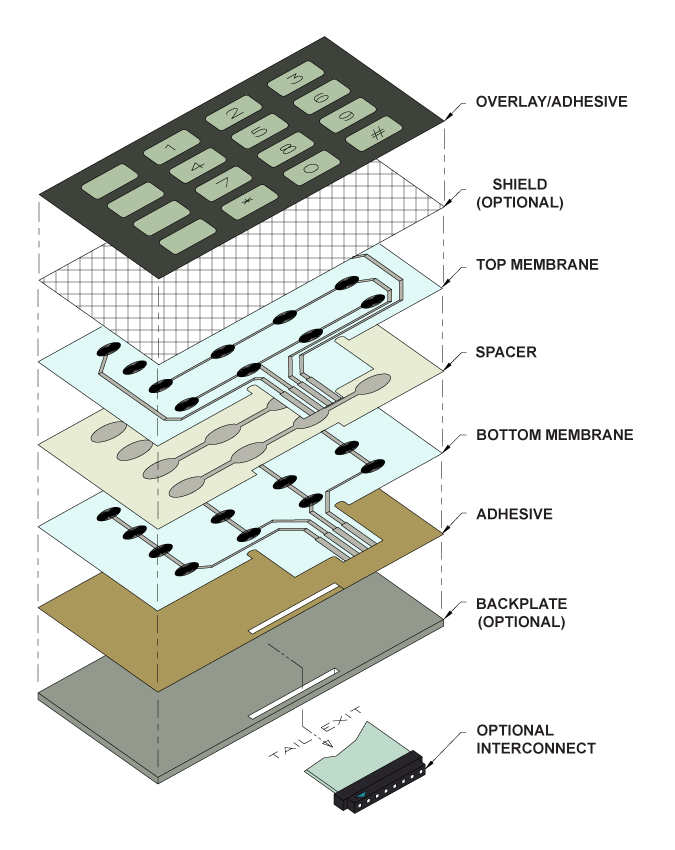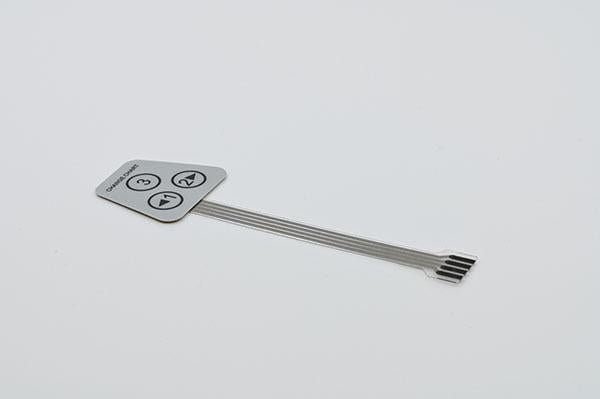Leading Advantages of Incorporating a Membrane Switch Into Your Digital Tools
Leading Advantages of Incorporating a Membrane Switch Into Your Digital Tools
Blog Article
Comprehending the Functionality of Membrane Layer Switches for Customer User Interface Devices
The performance of membrane layer switches stands for a significant development in customer interface design, incorporating effectiveness with visual flexibility. These switches run through a multi-layered framework that translates individual interactions into electrical signals, enabling for both portable layouts and strength versus ecological variables. As industries progressively focus on individual experience, recognizing the subtleties of membrane layer switch technology ends up being necessary. What effects do these advancements hold for future applications, and how might they redefine user interactions across different gadgets?
What Are Membrane Layer Switches?
Membrane layer buttons are ingenious user interface gadgets that promote customer communication with electronic equipment. These versatile components contain several layers, including a visuals overlay, spacer, and a published circuit layer. The layout enables a smooth combination into various digital gadgets, enhancing both the aesthetic and useful elements of interface.
Membrane switches are typically employed in a vast array of applications, from family home appliances to industrial machinery and clinical devices. Their construction generally includes a slim profile, making them an ideal choice for compact styles. The responsive responses offered by these switches can be crafted to fulfill certain customer choices, making sure reliable communication between the user and the tool.
Sturdiness is an additional substantial benefit of membrane buttons, as they are immune to dirt, dampness, and chemicals, which enhances their lifespan in demanding atmospheres. Furthermore, these buttons can be customized in regards to form, dimension, and visuals style, permitting branding and user-specific attributes. Overall, membrane layer switches represent a functional option for improving user experience in digital tools, integrating performance with visual charm in a reliable way.
How Membrane Changes Work
Operating on a straightforward principle, membrane changes make use of a layered building to sign up user input efficiently. Each switch includes numerous layers, consisting of a printed circuit layer, a spacer layer, and a leading visuals layer, which are created to interact flawlessly. When a user presses the leading layer, it presses the spacer layer, bringing the conductive components of the circuit layer right into call with each other.
This get in touch with develops a closed circuit, signaling the tool to execute a certain function. The style enables various arrangements, consisting of tactile feedback, which can improve the individual experience by offering a physical sensation upon activation. The products used in membrane layer buttons typically include flexible substrates, such as polyester or polycarbonate, which make sure longevity and durability against deterioration.

Key Benefits of Membrane Buttons

One more substantial advantage is their compactness. Membrane buttons are slim and lightweight, which makes it possible for manufacturers to conserve space in their gadgets without sacrificing functionality. This function is especially helpful in applications where weight and volume are vital factors to consider.
Furthermore, membrane switches are immune to dirt, click site dampness, and chemicals, improving their toughness. This resilience prolongs their lifespan and reduces the requirement for frequent replacements, resulting in expense financial savings with time.
Additionally, the responsive responses provided by membrane buttons can be enhanced to enhance individual interaction. They can consist of features such as increased buttons or audible clicks, boosting functionality and customer experience.
Applications Throughout Industries
Interface devices using membrane buttons prevail in a broad range of industries, showcasing their flexibility and capability. Membrane Switch. In the clinical sector, membrane layer switches are indispensable to gadgets such as diagnostic tools and person surveillance systems, where their durability and simplicity of cleansing are critical for keeping hygiene requirements. In the vehicle sector, these buttons are employed in control panel controls and infotainment systems, offering a streamlined and modern user interface for individuals.
Moreover, the customer electronic devices sector gain from membrane layer switches in devices and handheld devices, where portable layout and straightforward user interfaces improve customer experience. Industrial applications additionally take advantage of membrane switches over for control panels in equipment and automation systems, emphasizing their effectiveness and resistance to severe environments.
In the aerospace and protection sectors, membrane layer switches are made use of in cockpit controls and devices, where integrity and efficiency under severe conditions are vital. Furthermore, the pc gaming sector significantly integrates membrane layer buttons in controllers and arcade machines, adding to an engaging individual experience. Generally, the versatility of membrane layer switches over allows their prevalent use across many markets, emphasizing their importance in contemporary individual interface layout.
Future Trends in Membrane Layer Switch Over Innovation

In addition, using advanced materials, such as polycarbonate and polyester films, is anticipated to increase, more providing enhanced durability and resistance to environmental stress factors. These products add to the general durability of membrane layer switches, making them appropriate for harsher industrial applications.
Moreover, the consolidation of wise modern technology, including IoT connectivity, will certainly allow membrane buttons to interact with various other devices and systems, assisting in a more interactive individual experience. This trend straightens with the expanding need for wise tools across numerous markets, from healthcare to customer electronic devices.
Finally, modification options are expected to broaden, permitting manufacturers to develop bespoke options customized to certain individual requirements and preferences. These advancements will certainly place membrane layer switches as vital components in the advancement of published here interface innovation.
Final Thought
In conclusion, membrane switches stand for an essential innovation in customer interface modern technology, supplying a trusted and versatile option for diverse electronic applications. As developments in material science and touch sensing innovations continue, the functionality and applicability of membrane layer buttons are expected to expand, enhancing their significance in contemporary digital devices.
Report this page